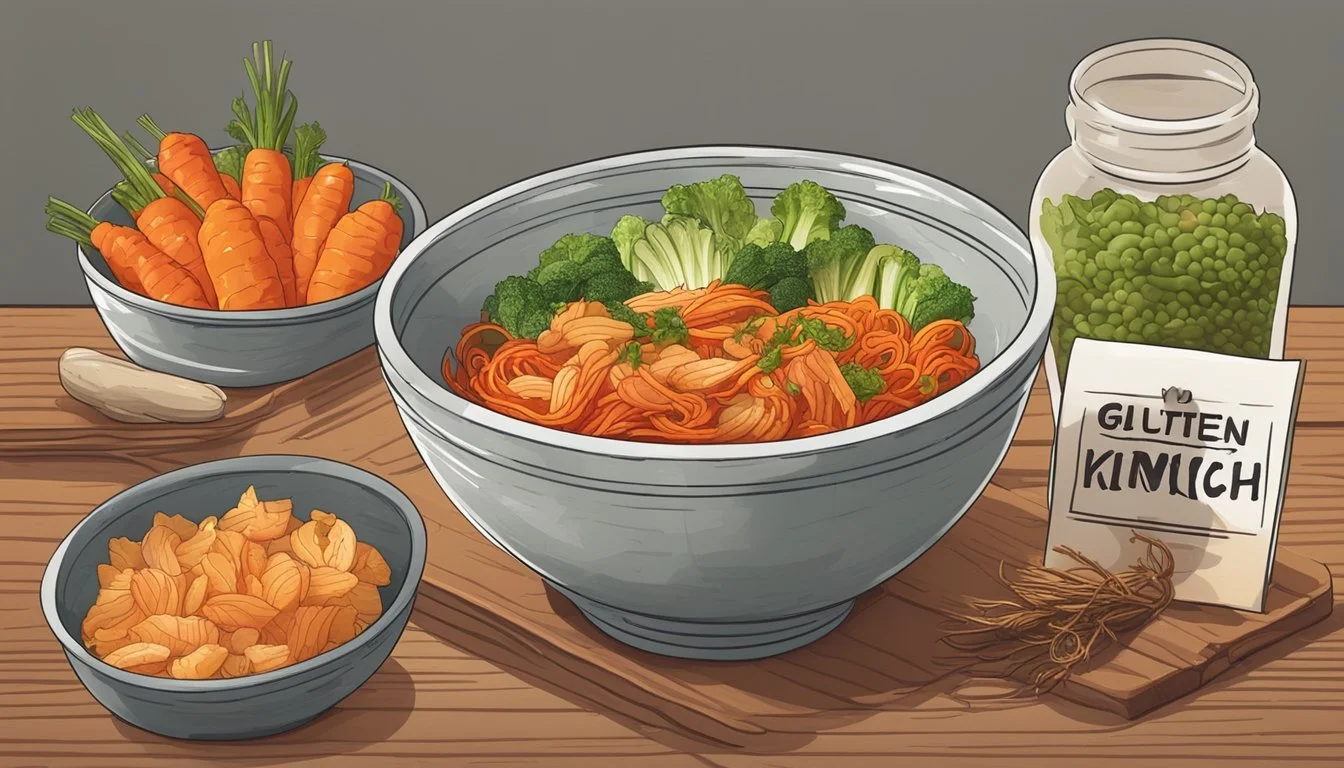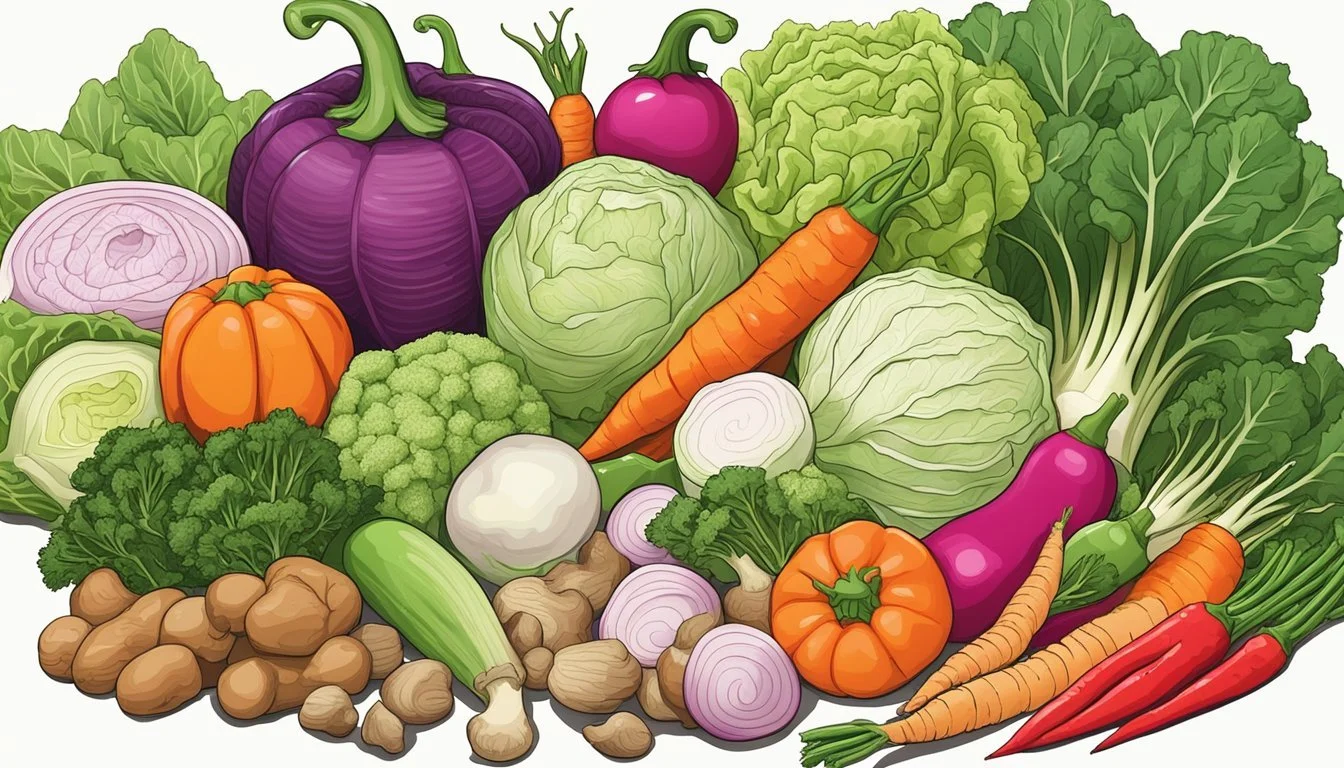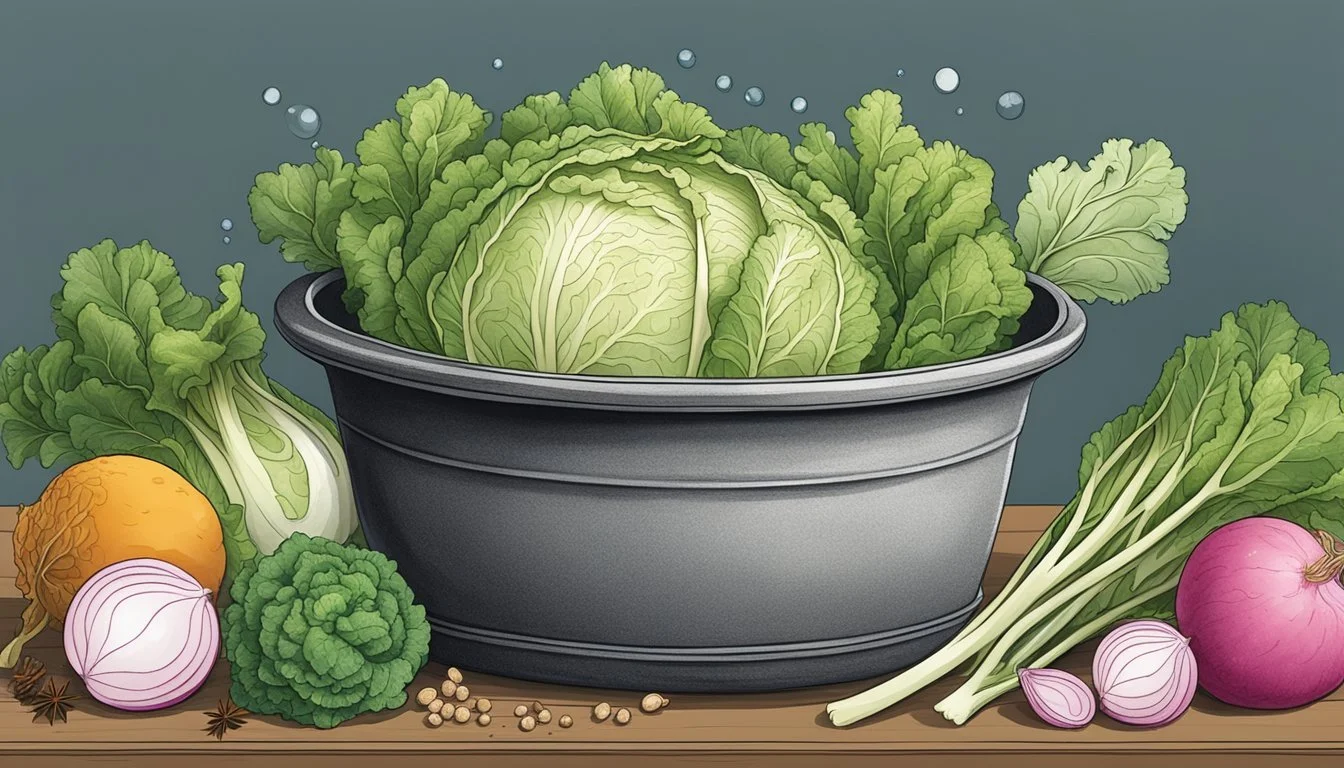Is Kimchi Gluten-Free?
Understanding the Ingredients and Preparation Process
Kimchi, a traditional Korean fermented dish, has gained popularity worldwide due to its unique taste and health benefits. This dish typically consists of seasoned vegetables, the most common being napa cabbage and Korean radishes, which are naturally gluten-free. Various other vegetables like scallions, cucumber, and carrot can also be added. The rise in gluten-related disorders has led many consumers to question whether kimchi fits into a gluten-free diet.
The answer largely depends on the specific ingredients used in the fermentation process. While napa cabbage and radishes used in kimchi do not contain gluten, certain additives like soy sauce or fish sauce, commonly found in some kimchi recipes, may have wheat extracts. Additionally, it’s essential to consider the thickening agent used in the kimchi base; traditional kimchi often uses glutinous rice flour, which is gluten-free, but some variations could employ wheat flour or other gluten-containing ingredients.
Therefore, for those adhering to a gluten-free diet due to celiac disease or gluten sensitivity, it is crucial to examine the ingredient list or make kimchi at home with verified gluten-free components. This ensures that the health benefits of kimchi can be enjoyed without the risks associated with gluten consumption.
Understanding Kimchi
In exploring the world of fermented foods, kimchi emerges as a staple dish with profound cultural roots and a distinct assembly of ingredients. Its versatility and health benefits make it an essential component of Korean cuisine.
Defining Kimchi
Kimchi is a traditional Korean side dish, mostly comprising fermented vegetables. Its base ingredient is often napa cabbage, but it can include a variety of other vegetables like radishes and carrots. Fermentation, a process crucial to developing kimchi's flavor, involves preserving these vegetables with salt and allowing beneficial bacteria to enhance both taste and nutritional value.
Cultural Significance
In Korean culture, kimchi is more than just a food; it represents a heritage of collective experience and tradition. Each region and even individual families have their own variations passed down through generations. The preparation of kimchi, known as "kimjang," is a significant annual event in Korea that involves making large quantities of kimchi to last through the winter months.
Common Ingredients
A typical kimchi recipe includes:
Cabbage (primarily napa cabbage)
Chili pepper, for spice and its characteristic red color
Salt, to aid the fermentation process
Garlic and ginger, key for flavor
Scallions, for their sharp taste
Other vegetables like carrots and a range of seasonings may also be added to create unique flavors. Every ingredient is chosen to contribute to the complex taste and rich nutritional profile of kimchi.
Gluten and Celiac Disease
Understanding the nature of gluten and the impact of celiac disease is crucial for individuals managing gluten sensitivities. This section delves into what gluten is and explains celiac disease and its relationship with gluten.
What is Gluten
Gluten is a group of proteins commonly found in grains such as wheat, barley, and rye. Its primary role is to provide elasticity and chewiness in baked goods. For individuals with gluten sensitivities, ingestion of gluten can trigger an immunological response leading to inflammation and damage in the body.
Celiac Disease Explained
Celiac Disease is a serious autoimmune disorder wherein consumption of gluten leads to damage in the small intestine. When someone with celiac disease eats gluten, their body mounts an immune response that attacks the small intestine, leading to symptoms like abdominal pain, bloating, and chronic diarrhea. The damage to the intestinal lining impairs nutrient absorption and can cause long-term health issues.
Kimchi and Gluten
Kimchi, a staple in Korean cuisine, is a traditional side dish made from fermented vegetables. It is known for its distinct taste and purported health benefits. The relationship between kimchi and gluten hinges on the ingredients utilized in its preparation.
Analyzing Traditional Kimchi Recipes
Traditional kimchi recipes typically call for a variety of vegetables such as Napa cabbage, radishes, and scallions, with added seasonings like garlic, ginger, and chili peppers. For additional flavor, some kimchi recipes may incorporate gochujang (Korean chili paste), fish sauce, or soy sauce. Glutinous rice flour is often used to thicken the paste that flavors the kimchi.
Sources of Gluten in Kimchi
While kimchi's base ingredients are inherently gluten-free, certain additives such as soy sauce and gochujang may contain gluten due to their fermentation process. Fish sauce can also be a culprit if it includes hydrolyzed vegetable protein. Moreover, some chefs may use wheat-based flour as a thickener, instead of the traditional gluten-free glutinous rice flour, which can introduce gluten into the recipe.
Ingredient Potential Gluten Source Soy Sauce Yes, unless specified as gluten-free Gochujang Yes, check for gluten-free labeling Fish Sauce Possible if it contains hydrolyzed vegetable protein Flour (non-specific) Yes, unless specified as gluten-free
Gluten-Free Variants of Kimchi
To ensure kimchi is gluten-free, one can opt for variants that use gluten-free soy sauce or tamari, an alternative with a similar flavor profile that is naturally gluten-free. Ready-to-eat gluten-free brands like Lucky Foods Seoul Kimchi and Wildbrine Kimchi are available for those seeking convenience. For homemade kimchi, using gluten-free ingredients like glutinous rice flour and avoiding gluten-containing products is key. Gluten-free kimchi not only caters to those with gluten sensitivities but also maintains the authentic taste and extra texture that kimchi enthusiasts expect.
Gluten-Free Substitute Description Tamari A gluten-free soy sauce alternative with rich flavor Gluten-Free Flour Can be used for thickening instead of wheat-based flour Gluten-Free Gochujang Specially made without gluten-containing ingredients
Health Benefits of Kimchi
Kimchi, a fermented staple in Korean cuisine, not only offers a unique taste but is also highly regarded for its numerous health benefits. It is particularly celebrated for its nutritional density, gut-friendly properties, and enrichment with essential vitamins that support overall health.
Nutritional Composition
Kimchi’s nutritional profile is impressive. It is low in calories and fat-free, making it an ideal food item for weight management. A typical half-cup serving contains approximately:
20 calories
0g fat
1g protein
4g carbohydrates
In addition to these macronutrients, kimchi is an excellent source of vitamin C and vitamin A, contributing to antioxidant protection and immune function.
Probiotics and Digestion
The process of fermentation endows kimchi with live cultures called probiotics. These beneficial bacteria are essential for a healthy digestive system. They aid in breaking down food and assimilating nutrients while also helping to maintain a balanced microbiota, promoting better digestion and possibly helping to prevent various digestive issues.
Immune Support and Vitamins
Kimchi contributes to immune health through its vitamin content and the presence of probiotics. Vitamin C and vitamin A, both found abundantly in kimchi, play an active role in supporting the immune system. Fermentation may also enhance the bioavailability of these vitamins, making them more accessible for the body to use. The inclusion of kimchi in one's diet can therefore be a valuable practice for bolstering immunity.
Preparation and Ingredients
Proper selection and preparation of ingredients are crucial in creating a delicious kimchi that is also safe for those with gluten sensitivities. This section outlines how to choose the right components for a gluten-free kimchi and the substitutions that can be made to ensure it remains gluten-free.
Choosing the Right Ingredients
When preparing gluten-free kimchi, it is essential to scrutinize each ingredient for potential gluten content. The basic ingredients list for traditional kimchi includes napa cabbage, daikon, green onions, garlic, and often sea salt and sugar. These ingredients are naturally gluten-free. However, fermented foods such as kimchi often call for the use of condiments like soy sauce, which typically contains gluten. Vegan kimchi variants may include additional vegetables such as cucumber, apple, or shiitake mushrooms, all of which are naturally free of gluten as well.
One should pay close attention to any added seasonings or pre-made sauces as these can be hidden sources of gluten. Even ingredients as simple as chili flakes may have been processed in a facility that also processes wheat, thereby raising the risk of cross-contamination.
Gluten-Free Alternatives
To create a gluten-free kimchi recipe, substitutions can be made for traditional ingredients that contain gluten. For instance:
Soy Sauce Alternative: Instead of conventional soy sauce, one can opt for tamari, which is a Japanese soy sauce that's generally made without wheat, or a certified gluten-free soy sauce.
Wheat-Based Seasonings: If the recipe calls for any seasoning that includes wheat, it should be substituted with a gluten-free variant. Always check labels to verify the absence of gluten.
Fermentation Process: During the fermentation process, ensure that any vessels or tools used are not cross-contaminated with gluten from previous use.
The base recipe for kimchi is flexible, allowing for an array of gluten-free ingredients that can enhance the flavor profile. For example, adding grated apple for sweetness can balance the robust flavors of the garlic and onions. For its part, sea salt not only aids in the fermentation process but also intensifies the dish's natural flavors. If additional sweetness is desired, ensure the sugar used is gluten-free or consider alternatives such as honey.
The attentive selection of ingredients and mindful substitution are the keys to a safe and savory gluten-free kimchi.
Identifying Gluten-Free Kimchi
When selecting kimchi for a gluten-free diet, one needs to examine labels meticulously and consider reputable brands that cater to dietary restrictions.
Reading Labels and Ingredients
A consumer must carefully read food labels to ensure the absence of gluten-containing ingredients. Traditional kimchi can be gluten-free as it is made from vegetables like cabbage and radish, and seasonings such as garlic, ginger, and chili pepper. However, some key ingredients to watch for include:
Soy sauce: Often contains wheat; look for tamari or soy sauce labeled as gluten-free.
Fish sauce: Some brands may include wheat-based additives; always check the label.
Flour: While some kimchi recipes use glutinous rice flour, which is gluten-free, others may use wheat flour as a thickener.
A gluten-free label is a reliable indicator, but one should also check for a certification from a recognized gluten-free organization.
Reputable Brands and Purchasing Tips
Identifying reputable brands that produce gluten-free kimchi can streamline the purchasing process. Here are tips for choosing the right kimchi:
Research brands: Look for companies that specialize in gluten-free products or have a consistent track record of gluten-free labeling.
Purchasing locations: Gluten-free kimchi can often be found in health food stores, specialty sections of grocery stores, or through online retailers.
Double-check: Even if a brand is known for gluten-free products, always review the ingredient list of the specific kimchi variant you are purchasing.
Purchasing kimchi from reputable brands reduces the risk of cross-contamination and ensures compliance with dietary restrictions.
Making Your Own Kimchi
When making kimchi at home, one must ensure the use of gluten-free ingredients and prevent cross-contamination to produce a safe and savory batch.
Homemade Kimchi Recipe
To create homemade kimchi, one begins by selecting fresh, gluten-free ingredients such as cabbage, radish, scallions, garlic, ginger, and chili pepper among others. Using these staple ingredients, the following steps guide the process:
Prepare the Vegetables: Cut the cabbage into pieces, ensuring they fit into the fermentation jar, and similarly prepare other vegetables like radishes and carrots.
Create the Marinade: Use a food processor to blend the base ingredients for the kimchi marinade such as onion, garlic, ginger, and chili pepper into a smooth paste.
Coat the Vegetables: Thoroughly mix the prepared vegetables with the marinade, ensuring an even coat, ideally by using kitchen gloves or utensils to toss them effectively.
Pack: Place the mixture in a glass jar, pressing down until the brine covers the vegetables, leaving space at the top.
Seal and Store: Close the jar and allow fermentation at room temperature, frequently releasing gases that build up.
Note: The fermentation process, key for the development of the characteristic flavors, can take from 1 to 5 days depending on one's taste preference.
Avoiding Cross-Contamination
Maintaining a gluten-free kitchen environment is critical when preparing homemade kimchi to avoid cross-contamination. They should consider the following precautions:
Separate Utensils: Use separate sets of kitchen tools and containers solely for gluten-free cooking to prevent mixing with gluten-containing residue.
Clean Surfaces: Before preparation, thoroughly clean all surfaces and equipment with suitable cleaning agents to ensure the removal of any gluten particles.
Ingredient Check: Verify all ingredients, including spices and condiments, for gluten content. Be cautious of products like gochugaru (Korean chili powder) or soy sauce, which might require specific gluten-free variants.
Labeling: Clearly label gluten-free items and ensure they are stored away from gluten-containing products to minimize any risk of accidental mixing.
Incorporating Kimchi into the Gluten-Free Diet
Kimchi can be a beneficial addition to a gluten-free diet when made with gluten-free ingredients. It offers versatility in usage and a burst of flavor as a side or an included ingredient.
Kimchi as a Side Dish
Kimchi traditionally serves as a side dish in Korean cuisine, accompanying meals and providing a probiotic-rich, tangy complement. For those on a gluten-free diet, one must ensure that the kimchi is prepared without any gluten-containing ingredients like certain brands of fish sauce or soy sauce. As a side dish, kimchi pairs well with myriad gluten-free main courses, adding a distinct flavor profile to meals. Serving suggestions often include placing a modest portion alongside gluten-free grains such as rice or with protein options like grilled tofu (What wine goes well with grilled tofu?) .
Creative Ways to Use Kimchi
Beyond its role as a side, kimchi's versatility extends into various culinary creations. Here are a few gluten-free ways one can incorporate kimchi:
Salads: Toss chopped kimchi into fresh salads for an added spicy and sour crunch.
Tofu Scramble: Stir kimchi into a tofu scramble to enhance the flavor profile with an umami-rich component.
Stews: Add kimchi to gluten-free stews or soups to introduce complexity and depth to these comforting dishes.
Each use of kimchi within these dishes should be carefully considered to maintain a gluten-free diet, ensuring the avoidance of cross-contamination and scrutinizing labels of store-bought kimchi for hidden sources of gluten.
Fermentation and Flavor
Kimchi's distinctive taste is a direct result of its fermentation process, which enhances both the flavor and nutritional profile. This section explores how fermentation contributes to kimchi’s unique umami flavor.
Understanding the Fermentation Process
The fermentation of kimchi involves various vegetables, most commonly napa cabbage and Korean radishes. During fermentation, natural lactobacillus bacteria convert sugars into lactic acid. This not only preserves the kimchi but also creates its complex, tangy taste. The ingredients typically used include:
Napa cabbage
Korean radish
Garlic
Ginger
Scallions
Crucially, Korean chili pepper powder is often added, which imparts a deep red hue and spicy umami flavor that is characteristic of traditional kimchi. Fermentation can last from a few days to several weeks, with flavors developing and intensifying over time.
Umami: The Fifth Taste
Umami, often described as a savory or meaty flavor, is one of the five basic tastes. It is a key flavor profile in kimchi, attributed to compounds like glutamates and nucleotides. These are naturally occurring in fermented products and are also plentiful in ingredients such as:
Fish sauce
Seaweed
Mushrooms
In kimchi, the umami flavor is particularly enhanced by the addition of Korean chili pepper powder, which contains glutamates that contribute to the depth and richness of the flavor. The fermentation process further develops the umami taste, making kimchi a flavorful addition to a wide range of dishes.






